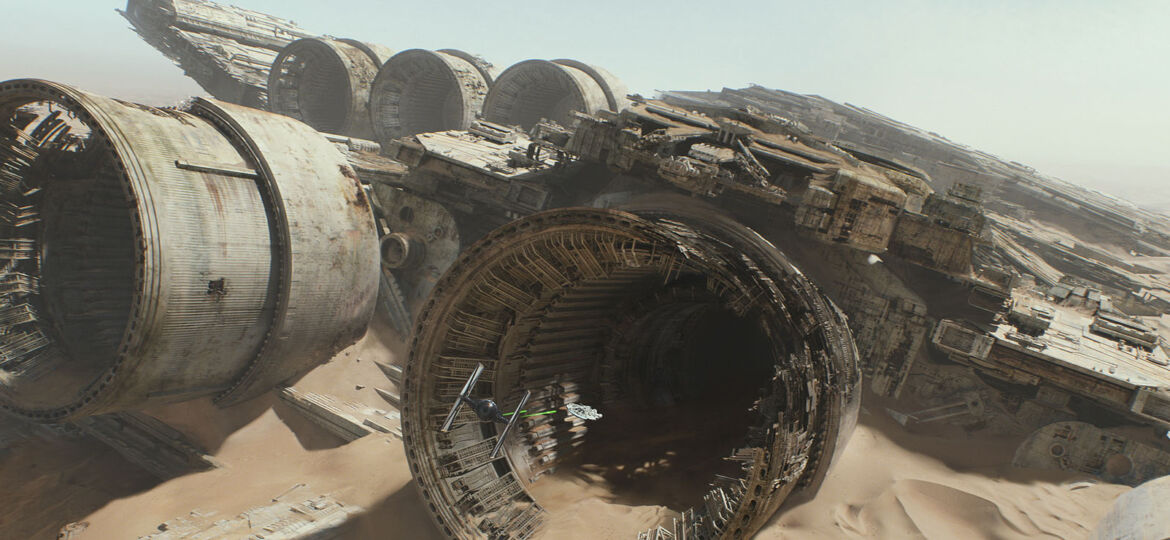
WHY THIS MATTERS IN BRIEF
CGI changed the film industry but this is just the beginning, the real revolution is still to come.
Earlier this year I wrote an article on technology is, and will, transform the future of entertainment industry and some of those predictions are already coming true. While there’s no doubt that the recent Star Wars blockbuster The Force Awakens relied heavily on computer generated effects to create a galaxy full of spaceships, strange aliens and planet wrecking super weapons just how much it relied on CGI might surprise you.
Back in the 1970’s when the original films were released George Lucas’ favourite tools were rubber prosthetics for the actors and miniature wireframe plastic models but now, just forty years later that entire trade has almost disappeared, giving way to CGI and green screens.
By the time the The Force Awakens hit the cinemas 92 percent of it had been computer generated. Now Industrial Light and Magic has now given us a peek behind the scenes at how some of those visual effects were made, posting a highlight reel to YouTube that shows how First Order bases, TIE Fighters, and even major characters were put together layer by layer.
Water spray kicked up by the low flying Millennium Falcon goes through multiple revisions – going from plastic looking gloop to the final spray – and Jakku’s crashed Star Destroyer is similarly complex, albeit for different reasons, built from the frame up with layer upon layer of detail. Each section represents hundreds, if not thousands of hours of work, but most flash by so fast you could easily miss them.
Increasingly there’s no doubt in my mind that more of this work will be undertaken and managed more and more by AI systems and platforms. But just as models have given way to CGI one of the next great changes facing the industry – other than AI stepping into the directors chair and drones replacing camera crews will be the digitisation of the actors themselves who’ll one day be no more than pixels on a hard drive.
















